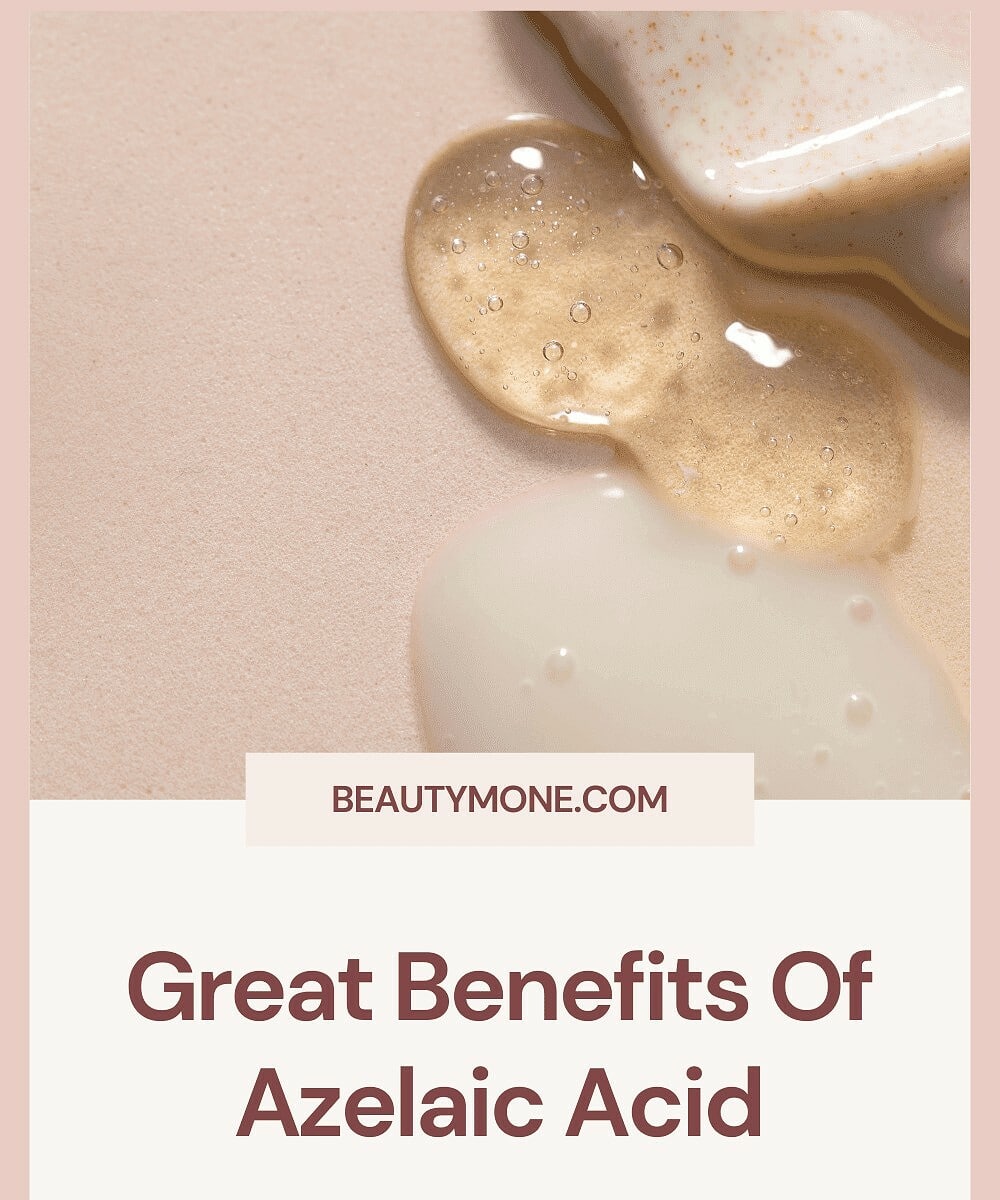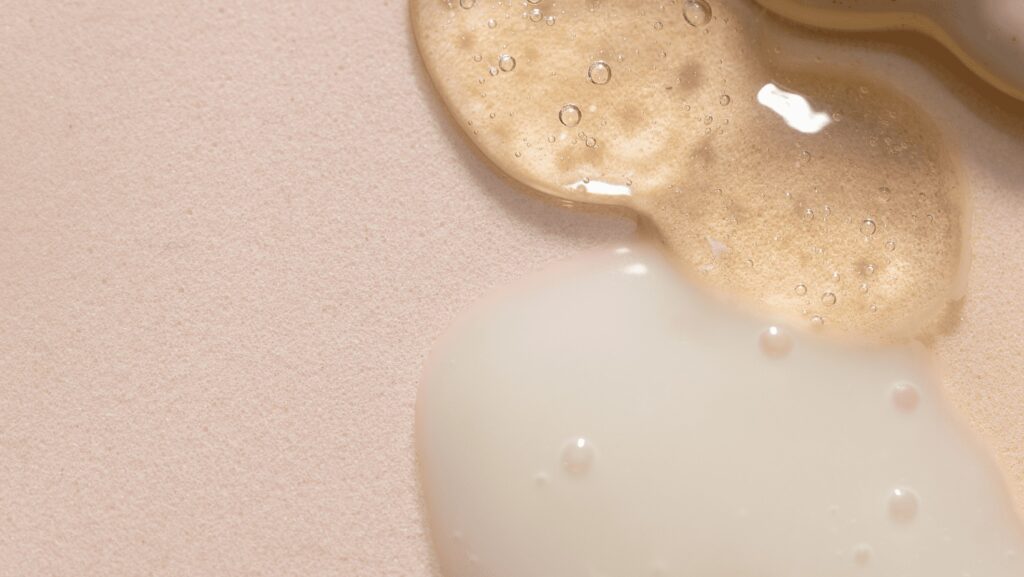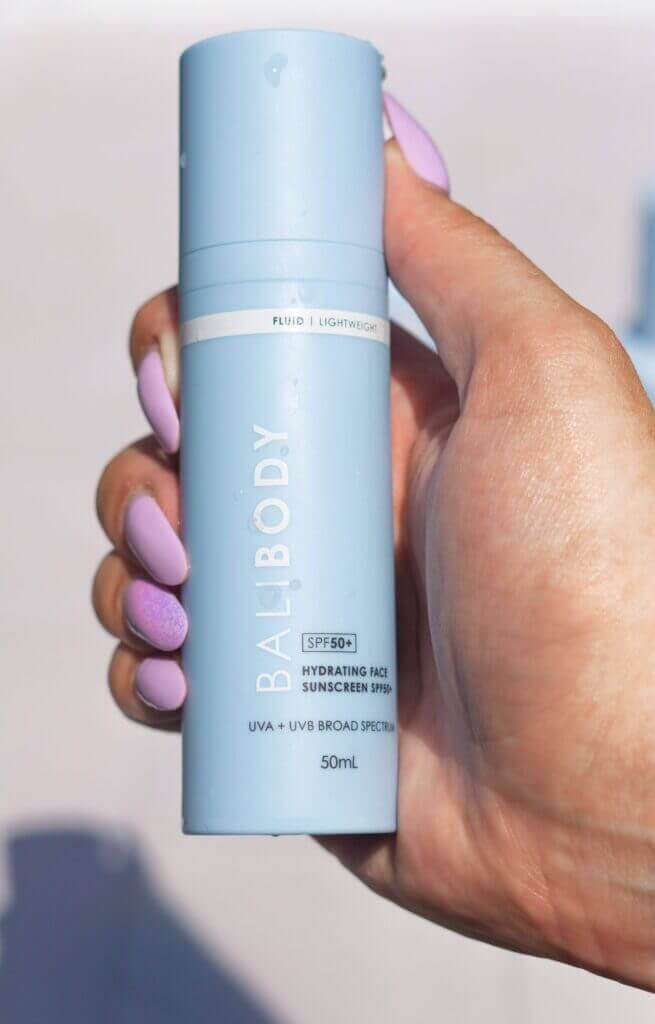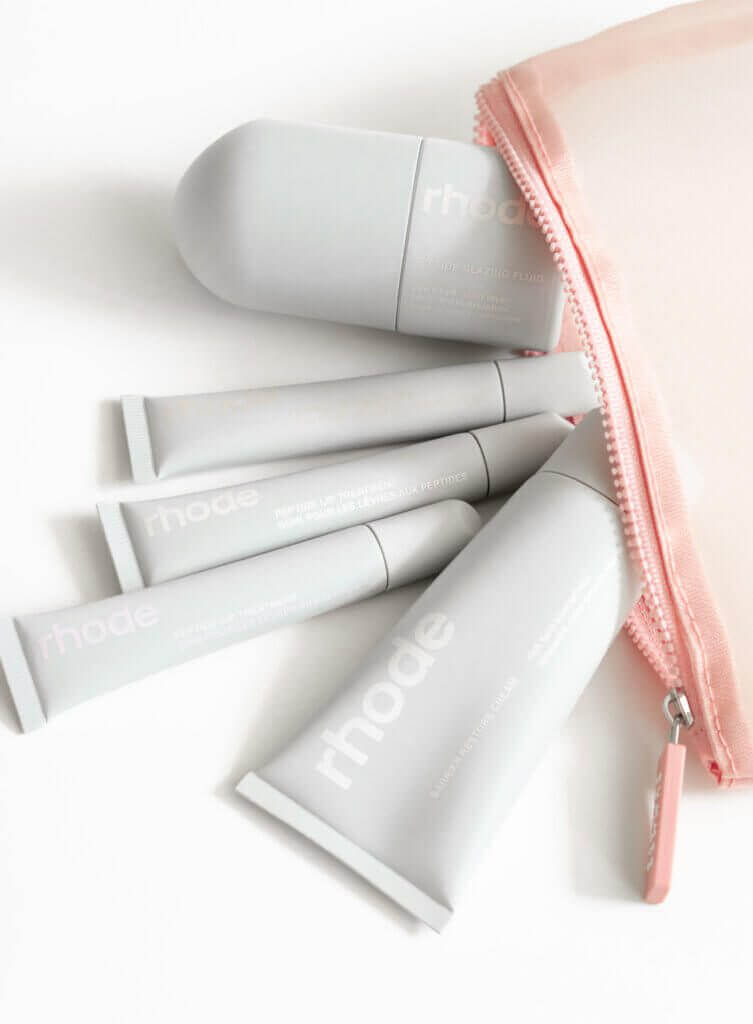
Azelaic acid—the natural chemical that can help with a multitude of skincare ailments, from acne to rosacea.
But are you sleeping on this multi-purpose skincare gem? What exactly are the benefits of azelaic acid?
In this article, we’ll run you through what precisely azelaic acid is, what it can be used to treat, and why you should consider adding it to your skincare routine. Are you ready to dive in?
See Skincare Ingredients List A-Z Here.
What Is Azelaic Acid?
As a type of chemical compound, you can find azelaic acid naturally. Present in barley, wheat, and rye, it also occurs as a by-product of the fungus Malassezia furfur. It’s actually a form of yeast found naturally on your skin (!) and a few other mammals.
Though this yeast can cause certain fungal infections, it can be used as a skincare treatment when the azelaic acid is extracted. In particular, it’s used to treat both acne and rosacea.
Available in a few different forms, you typically apply it to the skin in either a gel, foams, or creams.
It can also be prescribed as a pill. Typically, prescriptions of azelaic acid contain about 15–20% of the chemical. You can also purchase them in lower concentrations over the counter.
Azelaic acid has a huge range of anti-inflammatory and antimicrobial attributes and has a long history of use, mostly in medical environments.
However, as it can significantly alter skin blemishes, discoloration, and scars caused by acne and help with skin texture, the beauty industry has found its benefits remarkable- and you could too!
Don’t believe us? As a dicarboxylic acid, azelaic acid can help:
- Unclog pores and refine the surface of the skin
- Tone and fade discoloration of the skin or acne marks
- Rid the skin of blemishes by clearing dead skin cells and reducing sensitivity
- Create healthier, smoother skin thanks to its antioxidant properties.
That’s a lot for one product!

What Does Azelaic Acid Do?
Azelaic acid has multiple mechanisms and benefits, which means that it can be used quite widely. Bear in mind that you’re more likely to see results over a longer period of time, so it isn’t necessarily a quick-fix solution.
Ready for the science?
Azelaic Acid for Acne
Acne occurs when the dead skin cells on your body accumulate (gross!). Azelaic acid can help with this in a few different ways:
- By slowing the production of skin protein and increasing the production of skin cells, it prevents the buildup of dead skin cells, which cause acne.
- It can actually kill certain bacteria that live on your skin and causes acne, as well as inhibit comedone formations.
- As azelaic acid is an antioxidant, it’s able to neutralize free radicals– which subsequently lowers inflammation and prevents acne
- It’s able to cut the link between the production of testosterone and oil in your body, thereby preventing acne caused by puberty
- It acts as an exfoliant, cleanses the outer layer of your skin, and removes pore-clogging materials. This includes make-up, oil, and dirt.
You should, however, be aware that azelaic acid is likely to be less effective on anybody who suffers from severe cystic acne, as it only penetrates the top layer of the skin.
Azelaic Acid for Acne Scars
In addition to being helpful for the prevention and treatment of active acne, there is evidence that azelaic acid is beneficial for the treatment of acne scars.
As it helps increase the production of skin cells, this helps to shed dead skin cells and replace them with new ones. As a result, the appearance of acne scars may be minimized—a huge win for all acne sufferers!
Azelaic Acid for Hyperpigmentation
Azelaic acid is a tyrosine inhibitor.
Tyrosine is one of the non-essential amino acids your body produces, which can help produce melanin.
As melanin is responsible for producing pigmentation in the skin, azelaic acid can help stop hyperpigmentation from occurring by stopping this very process.
In particular, there is evidence that topical applications of azelaic acid can help with the management of melasma, especially when combined with other treatments.
Azelaic Acid for Skin Lightening
For reasons similar to above, azelaic acid’s tyrosinase inhibiting properties may also help with general brightening and skin lightening.
Studies have shown that azelaic acid at around a 20% concentration was highly effective at skin lightening, especially when combined with tretinoin. Either way, if you have dark patches that you want gone, azelaic acid could be your answer!
Azelaic Acid for Rosacea
Due to its anti-inflammatory properties and ability to reduce keratin production, azelaic acid can be highly effective in treating rosacea.
In addition to all of the above already discussed, which can exacerbate rosacea, it also reduces the visibility of swelling, red patches, and rashes.
When used consistently over a period of time, azelaic acid can help to minimize redness and appearance of blood vessels as well as smooth your skin.
However, it can take a while—up to 12 weeks, in fact—before you see any visible improvement in your skin’s condition. Patience is key!
Studies have shown that the simultaneous use of antibiotics can also help with the effectiveness of treatment.

How Does Azelaic Acid Differ from Other Acids?
As azelaic acid occurs naturally as a byproduct of the yeast already on your skin, this makes it quite different from other acids, such as glycolic, lactic, and salicylic acid (all used for skin care purposes as well).
In effect, it’s a much gentler acid. Azelaic acid is often offered in lower doses; therefore, effectiveness will be seen gradually over time. Retinoids, on the other hand, are generally higher in strength, and results can be achieved faster.
However, research shows that while azelaic acid may be as effective in treatment as benzoyl peroxide, there is a significant price difference with azelaic acid being quite a bit more expensive.
How Does Azelaic Acid Differ from Other Treatments?
While azelaic acid can be highly effective, results differ hugely from person to person. Though it can be an extremely effective treatment for some, it really depends on your skin type and symptoms.
It shouldn’t be considered a miracle treatment; the most common complaint is that it doesn’t work! It’s important to manage your expectations around its use and consider combination therapy.
It’s Often Prescribed with Other Forms of Treatment
As azelaic acid has few contradictions with other treatments, you can use it alongside various other acids and antioxidants. However, be sure to take care, as some of these harsher acids will have a more drying effect on the skin. On the other hand, Vitamin C can help repair pigmentation issues in complement with azelaic acid.
It’s also good to note that using azelaic acid while pregnant is considered safe (there is limited research available, but no adverse reactions have been reported). However, you should always consult your health professional before starting new treatments.
It Works Slowly
As mentioned above, it’s important to bear in mind that azelaic acid works a lot more slowly than other acids due to its relatively gentle exfoliant nature and concentration levels.
It could take a while for you to see positive results, and this will, again, vary person to person. Over-the-counter concentrations typically contain about 10% azelaic acid, which can take around 3–4 months to see results.
While prescription amounts of 15–20% can be faster than this, don’t expect it to happen overnight!

Benefits Of Azelaic Acid
To summarize some of the above, here is a list of benefits of using azelaic acid:
- Treats Acne: Azelaic acid is a common treatment for mild to moderate acne due to its antibacterial and anti-inflammatory properties. It helps to reduce the number of acne-causing bacteria and reduce inflammation.
- Fades Discoloration: Azelaic acid can help reduce the appearance of discoloration caused by post-inflammatory hyperpigmentation (PIH). It works by inhibiting the enzyme tyrosinase, which helps to reduce the production of melanin and lighten dark spots.
- Treats Rosacea: Azelaic acid can be used to treat rosacea, a chronic inflammatory skin condition. It helps to reduce inflammation, as well as the number of bacteria on the skin.
- Moisturizes Skin: Azelaic acid helps to keep the skin hydrated and moisturized, which can be beneficial for those with dry skin.
- Antioxidant Properties: Azelaic acid has antioxidant properties that can help protect the skin from damage caused by free radicals.
- Improves Skin Texture: Azelaic acid can help to improve skin texture by reducing the appearance of fine lines, wrinkles, and other signs of aging.
Azelaic Acid Side Effects
Common side effects of azelaic acid can include the following:
- The sensation of tingling and burning on your skin
- Dry skin
- Peeling skin
- As one of the effects of azelaic acid is that it removes the outer layer of skin, your skin will be more sensitive and susceptible to damage from the sun and UV rays. Make sure to take care and apply an SPF cream when using it!
There are also a few less common side effects, which include:
- Blistering on the skin or flaking
- Swelling and irritability, especially around the eyes
- Joint issues, such as pain or tightness
- Itchiness or the appearance of hives
- A fever
- Shortness of breath or difficulty breathing
Though less common, these could be more serious. If you experience any of these, it’s important that you discontinue the use of azelaic acid and make an appointment with your health professional.
Certain things, such as spicy food, hot drinks, and alcohol, may cause flushing with the use of azelaic acid. Try to keep these to a minimum, especially if you’re just starting to use azelaic acid.
You should also be aware that azelaic acid foam is flammable, so please avoid any open flames immediately after use!
Key Takeaways
As you can see, azelaic acid truly does have some amazing properties and potential for those suffering from skin conditions. It’s no wonder the beauty and medical industry has embraced it so widely!
For acne, hyperpigmentation, and rosacea, azelaic acid may be an extremely effective treatment, particularly when combined with other acids or antioxidants.
Its gentle qualities make it great for everyday use, especially as a gentle exfoliant. However, be aware that results will vary. Even though it occurs naturally as a byproduct on the skin, higher concentrations may not necessarily work for you!
Always consult your health professional before starting any new products and, for best results, opt for prescription strength quantities rather than over-the-counter products.
Sources
- https://en.wikipedia.org/wiki/Malassezia_furfur
- https://jddonline.com/articles/azelaic-acid-evidence-based-update-on-mechanism-of-action-and-clinical-application-S1545961615P0964X
- https://www.acnesupport.org.uk/treatment/azelaic-acid
- https://pubmed.ncbi.nlm.nih.gov/1769610
- https://www.ncbi.nlm.nih.gov/pmc/articles/PMC6561715
- https://pubmed.ncbi.nlm.nih.gov/1712709
- https://www.nbcnews.com/select/shopping/azelaic-acid-skin-ncna1236351
- https://pubmed.ncbi.nlm.nih.gov/8654129
- https://pubmed.ncbi.nlm.nih.gov/20645521
- https://editorial.victoriahealth.com/azelaic-acid-why-you-should-be-using-it
- https://www.paulaschoice.com/expert-advice/skincare-advice/ingredient-spotlight/azelaic-acid-for-skin.html
- https://www.theindependentpharmacy.co.uk/rosacea/guides/azelaic-acid-benefits
- https://www.bannerhealth.com/healthcareblog/teach-me/azelaic-acid-and-its-benefits
- https://www.today.com/shop/azelaic-acid-benefits-t233231
- https://dermnetnz.org/topics/azelaic-acid
- https://www.healthshots.com/beauty/skin-care/azelaic-acid-101-an-expert-explains-why-it-can-be-magical-for-your-skin
- https://www.webmd.com/skin-problems-and-treatments/what-to-know-about-azelaic-acid-skin
- https://www.webmd.com/skin-problems-and-treatments/what-to-know-about-azelaic-acid-skin
- https://www.hollandandbarrett.com/the-health-hub/natural-beauty/skincare/face/benefits-of-using-azelaic-acid
- https://simpleskincarescience.com/azelaic-acid
- https://www.healthline.com/health/azelaic-acid-acne#alternative-treatments
Related Posts
How we reviewed this article
- Process



